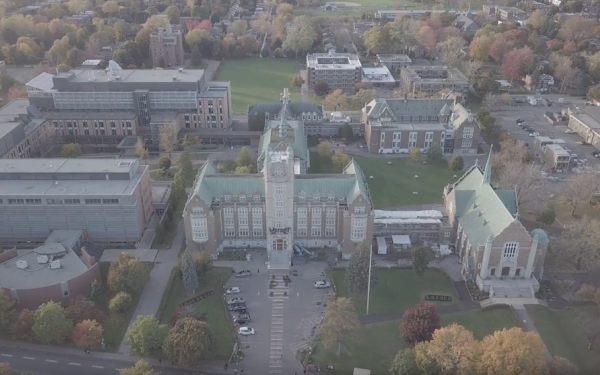A beginner’s guide to organizing a protest
The ins and outs of public demonstration
If you live in Montreal, it's likely you have experienced a protest—whether you were an organizer, participant, or simply watched a crowd march past your apartment.
According to the Service de Police de la Ville de Montréal website, each year in Montreal nearly 780 “public demonstrations” are held; a little over two a day. In 2012, a total of 1,377 demonstrations with SPVM crowd control were held—700 of these were held in direct response to tuition increases. Montrealers have never been afraid to take to the streets to speak their mind.
While extremely common, demonstrations don't just suddenly happen. Organizing one takes careful planning and consideration.
A public demonstration can be an effective way to get a message out, educate, and bring a community together around a central cause.
“A protest is a space to make demands,” said Patricia Boushel, a long-time event organizer and member of Mile End Ensemble. “They get a lot of attention because of how they cause a street to close. That in and of itself is a disruption, and a demonstration without a disruption is maybe a bit less effective.”
The First Steps
“The first thing you need to do is assemble a team. Find like-minded people that have the same goal or the same desire to make change,” said John Nathaniel Gertler, a member of the Coalition étudiante pour un virage environnemental et social.
A team is essential. You’ll need people to select a space, plan a route—if you plan on marching—and find a way to get the word out about your event.
Many demonstrations march or assemble near an important location, which is centrally related to their cause. You could choose to march on Ste-Catherine St. or other busy streets simply because it can bring a lot of attention to your cause.
At the event, you will need to have people available to speak to the media and police. You should also have access to a lawyer.
Volunteers arrive early to the event to set things up, such as a sound system if you plan on having people speak. They hold banners and help guide the crowd to ensure safety.
“Whenever I talk to people about activism, I always [say] that there's really room in activism for people with any skills, everyone has something that they're good at, maybe they're sort of like me and don't necessarily have a main skill, but this energy to bring,” said Gertler.
You should also have people trained in first aid, or with medical experience at your event, who can be easily identified.
A protest can be very volatile—things can get dangerous as people's passions run high. It’s important organizers mitigate the risk to the safety of participants.
“If you want to start organizing more, do some work and try to understand de-escalation,” said Boushel. Many event organizers take de-escalation courses to better prepare themselves for potential conflict. Whether it's between participants and civilians, conflict with the SPVM, or any other conflicts that may arise.
Marketing
Getting the word out is another challenge; most events use Facebook pages. They’re easily shared throughout the community and allow organizers to estimate how many people may come to an event.
“Writing a press release that you send out right before to get the media to show up to your event that's always a big thing,” said Gertler.
Protests are community events that bring a lot of people together, you can cultivate a community culture to get people to come out and get involved.
“Making it personal, ringing your neighbours, your friends…if they feel it's a thing that everyone else is doing they'll show up. Making it personal is really, really important,” said Boushel.
“I’ve seen so many people benefit from mobilizing themselves, it’s a really great way of building community and supporting each other.” — Patricia Boushel
The SPVM
It's important that organizers understand that the SPVM will be attending your public demonstration, protest or march—whether you want them to or not.
On their website, the SPVM says you should, “contact the local Police Department to provide the date, location, route of the demonstration, as well as an estimate of the number of demonstrators. If possible, two weeks prior to the event.”
In the spirit of protest and civil disobedience, this suggestion is not always followed. Deciding whether or not to notify the SPVM of your event and collaborate with them is an ethical challenge for some organizers.
“If you don't tell them what you intended on doing, you're up against this, this force, right? But, then if you do tell them it's their responsibility to protect your right to protest,” said Boushel. Many organizations calling for the defunding or abolishment of the police are now opting not to collaborate with them at all.
“The reality is a bunch of cops showing up to an event that they didn't know was going to happen and then they show up, with greater antagonism,” Boushel continued.
One such organization, which is no longer collaborating with the SPVM, is CEVES. “We believe that racial justice is climate justice […] Whether it's policing and racism, or ecological destruction, these same sorts of systems are oppressive, so we decided that we're not going to collaborate with them,” said Gertler.
“The fact that we haven’t given them any information combined with our demands has upped the level of police presence at our protests,” Gertler continued.
Organizing can seem very daunting at first. It's complex, but it's something Boushel thinks more people should take on.
“I've seen so many people benefit from mobilizing themselves, it's a really great way of building community and supporting each other,” said Boushel.
“Until you call the protests, you don't know how many people [will come] ... it's great, it's a kind of leap of faith.”
This article originally appeared in The Resistance Issue, published April 13, 2021.







